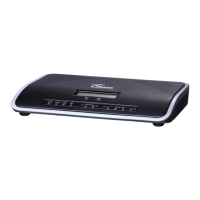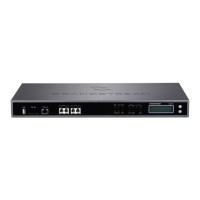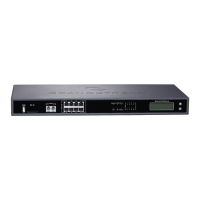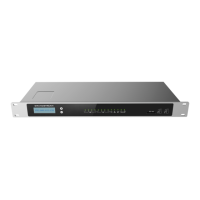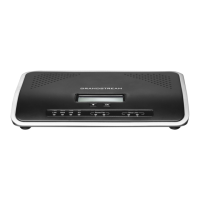CALL ROUTES
Outbound Routes
In the following sections, we will discuss the steps and parameters used to configure and manage outbound
rules in UCM6100, these rules are the regulating points for all external outgoing calls initiated by the UCM
through all types of trunks: SIP, Analog and Digital.
Configuring Outbound Routes
In the UCM6100, an outgoing calling rule pairs an extension pattern with a trunk used to dial the pattern. This
allows different patterns to be dialed through different trunks (e.g., "Local" 7-digit dials through a FXO while
"Long distance" 10-digit dials through a low-cost SIP trunk). Users can also set up a failover trunk to be used
when the primary trunk fails.
Go to Web GUI→Extension/Trunk→Outbound Routes to add and edit outbound rules.
• Click on to add a new outbound route.
• Click on to edit the outbound route.
• Click on to delete the outbound route.
On the UCM6100, the outbound route priority is based on “Best matching pattern”. For example, the UCM6100
has outbound route A with pattern 1xxx and outbound route B with pattern 10xx configured. When dialing 1000
for outbound call, outbound route B will always be used first. This is because pattern 10xx is a better match than
pattern 1xxx. Only when there are multiple outbound routes with the same pattern configured.
Table 60: Outbound Route Configuration Parameters
Configure the name of the calling rule (e.g., local, long_distance, and etc). Letters,
digits, _ and - are allowed.
• All patterns are prefixed with the "_".
• Special characters:
X: Any Digit from 0-9.
Z: Any Digit from 1-9.
N: Any Digit from 2-9.
".": Wildcard. Match one or more characters.
"!": Wildcard. Match zero or more characters immediately.
Example: [12345-9] - Any digit from 1 to 9.
Notes:
▪ Multiple patterns can be used. Each pattern should be entered in new line.
▪ Users can add comments to a dial plan by typing “/*” and “*/” before and
after each comment respectively.

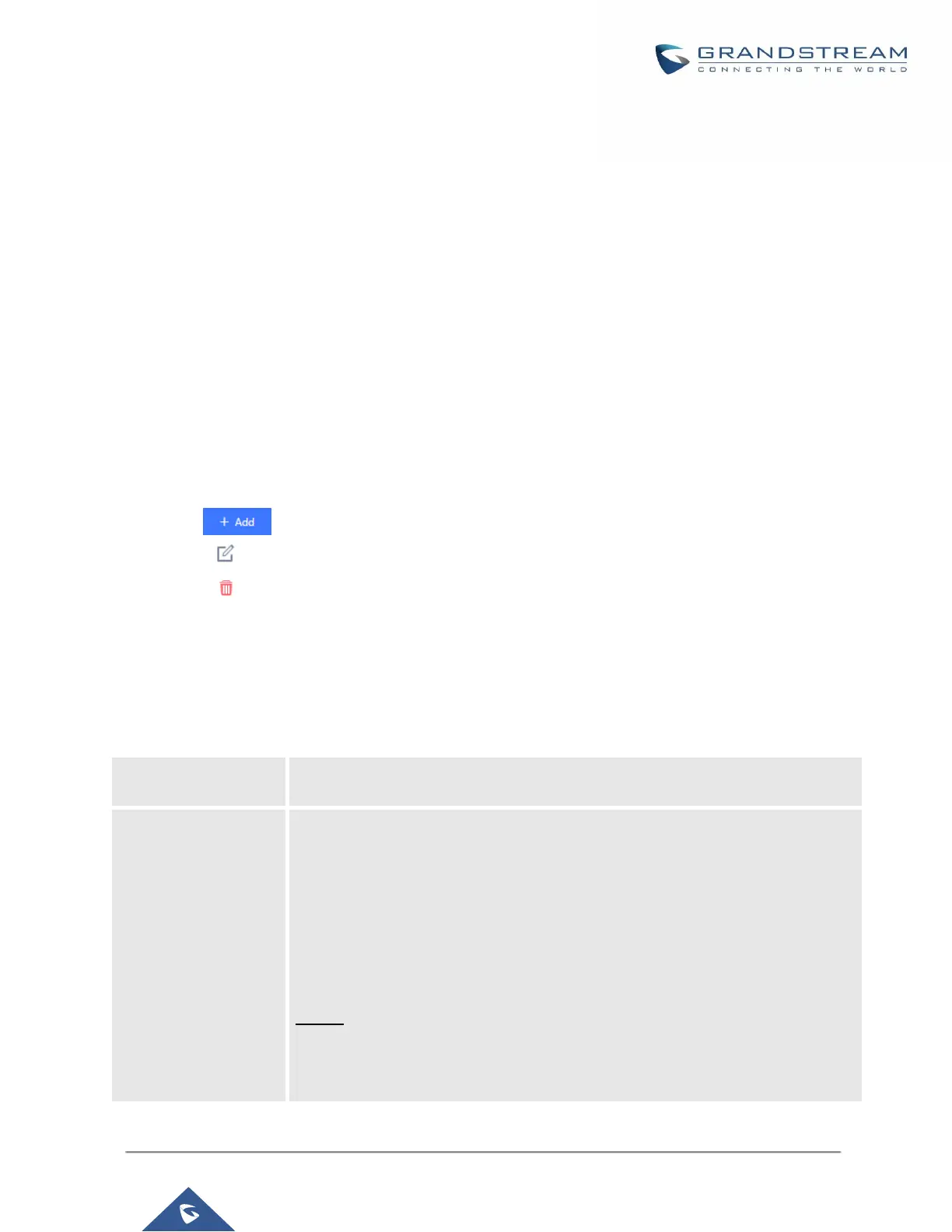